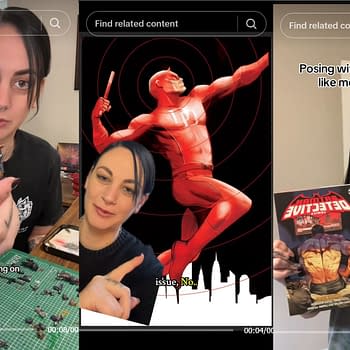Posted in: Comics | Tagged: Ivan Brunetti
Review: Cartooning Philosophy and Practice by Ivan Brunetti

Go to the art section of your local bookstore and you'll find any number of books on How to Be a Cartoonist. It's a staggering number, and they'll all offer the beginner an introduction the basics of how to draw. Some may even get into the rudimentary basics of storytelling, usually in the form of regurgitated newspaper gags. If you're not a rookie to cartooning, though, if you've kept up a steady drawing habit and are seriously looking to get some direction on How to Be a Better Cartoonist, is there a book worth your time?
The answer is yes, and it comes with a high caliber pedagogical pedigree. Cartooning: Philosophy and Practice is a new book on the art of storytelling with cartoons, penned by Ivan Brunetti. Brunetti easily circumvents the tired adage of "those who can't, teach." He's one of the few cartoonists working today who's versed in the three main areas of cartooning: he started doing cartoons for his college newspaper, produced several issues of his alt-comics memoir Schizo, and is regularly featured in the New Yorker. In addition, he preaches what he practices, teaching courses on cartooning at the University of Chicago and Columbia College Chicago.
Following the structure of his curriculum, the book is broken down into "weeks" rather than chapters or steps. Each section covers a basic principle not of drawing cartoons, but of writing with pictures. There's a further implication here, too, one which is important for the student seriously considering their craft: development takes time and investment if you want to learn anything and improve. Each of Brunetti's lessons builds on the ideas and explorations of the previous weeks'; it's not a book to flip through, but a process to follow. If you can't actually attend his classes, Cartooning is as close to learning from Brunetti first-hand as you can get; though obviously the book is no substitute for the experience of working with a skilled mentor in person.
The book is no "Learn to draw face 1-2-3!"-type manual, and is in fact quite text heavy, almost the mirror twin of Scott McCloud's books. It's a book that doesn't presume to teach you to copy the author's style of drawing but to give guidance to developing one's own personal craft. To get the full effect from the book, you need to work with it, take the lessons, week by week, practice the exercises, and most importantly approach it with a interest in surprise and discovery. If you don't leave yourself open to finding out things about your artistic process, no amount of time spent on craft will have anywhere near as much possible payoff..
Most unique to the book is how it approaches the idea of cartoons. Brunetti describes the artform as a kind of pictogram. Various exercises include learning to tell a story with a single panel, exploring the versatility of expression, and doodling as a means to discover the "voice" of one's own drawing line.
For the developing cartoonist, looking to improve their craft and better understand their own processes, Cartooning is an excellent guidebook. As the author says in his introduction:
A good teacher… points the students toward wringing good work from themselves."
Cartooning: Philosophy and Practice by Ivan Brunetti is available from Yale University Press for $13
Greg Baldino writes for various publications and lives in Chicago, wringing the best work out of him that he can. Despite this, still no Pulitzer. Contact him at greg.baldino@gmail.com











